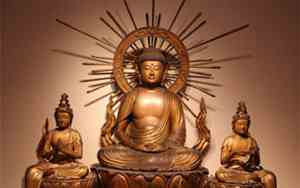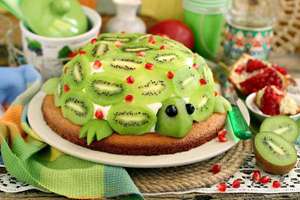风水八字命理择日(八字命理风水学)
中华豪门—中华文化瑰宝—楹联
本期编辑/开鸿顺
KaiHongShun Studio
————————
古代殿堂、庙宇以及家庭堂屋前大多有两根插廊柱子,叫做“楹”。人们贴对联时,常常贴在这对称的楹柱上(古代最多的是写或者挂在楹柱上)。
In ancient times, there were mostly two pillars with corridors in front of palaces, temples, and family halls, called "pillars". When people paste couplets, they often stick them on these symmetrical pillars (most commonly written or hung on pillars in ancient times).
楹联在我国有着悠久的文化源流和广泛的群众基础。它肇始于唐五代年间,兴盛于明清两代,发展到今天,是劳动人民智慧的结晶。
Couplets have a long cultural heritage and a broad mass base in China. It originated during the Tang and Five Dynasties, flourished during the Ming and Qing dynasties, and has developed to this day as a crystallization of the wisdom of the working people.
民间楹联出自民间,写自民间,用自民间,大致可分为春联、门联、堂室联、书斋联、婚联、寿联、新居联、馈赠联等形式。
Folk couplets come from the people, are written from the people, and are used by the people. They can be roughly divided into spring couplets, door couplets, hall couplets, study couplets, marriage couplets, birthday couplets, new residence couplets, gift couplets, and other forms.
春联
春联在楹联大家族中是最接地气的,最早称之为“桃符”,是中华民族过春节的重要标志。春联除了称“桃符”,又称“春贴”“门对”“对联”。
Spring Festival couplets are the most down-to-earth among the couplet families, initially known as "Taofu" and an important symbol of the Chinese nation's Spring Festival celebration.
春联通常由对联和横批组合而成。好的横批,可起到锦上添花之妙。春联分为上联、下联,联语字数不限,但必须相等。横批多为四字,过去写横批是从右往左横写,现今多从左往右写,从右往左写当属正式写法。
Spring Festival couplets are usually composed of couplets and horizontal scrolls. A good horizontal approval can add to the cake. Spring Festival couplets are divided into upper and lower couplets, with no limit to the number of characters in the couplets, but they must be equal.
春联的内容大都是描绘美好、抒发心愿。当人们在自家大门两旁贴上写在红纸上的春联和“福”字时,红纸华彩,乌墨飘香,年味就到了。
The content of Spring Festival couplets mostly depicts beauty and expresses wishes. When people stick Spring Festival couplets and the word "Fu" written on red paper on both sides of their front doors.
门联
门联是指春联以外,在大门上所挂时间很长的楹联。其特点是既要高雅,又要贴切,内容大致分为治家、报国、福寿、吉祥、传承等方面。这种门联有的是用木板雕刻,有的直接题刻在大门两侧的墙壁上。
Gate couplets refer to couplets that have been hung on the gate for a long time, in addition to Spring Festival couplets. Its characteristic is to be both elegant and appropriate...
很多门联的内容出自名人诗句,对仗工整,通常代表了主人的身份和志向,以及对治国、修身等方面的追求。
Many of the content of the gate couplets is derived from famous poetry, with neat and neat dialogues, usually representing the identity and aspirations of the owner, as well as the pursuit of governance, self-cultivation, and other aspects.
譬如,在老北京胡同的四合院里就有许多刻在大门上的门联,也叫“门心对”。它是整个四合院的“亮点”。在两扇大门外侧涂上黑漆,门心涂红漆,先把对联内容描摹在红漆上,再用黑漆描写,最后将字双钩刻出,一副门联就诞生了。
For example, in the courtyard of the old Beijing Hutong, there are many gate couplets engraved on the gate, also known as "Gate Heart Pair". It is the "highlight" of the entire quadrangle.
堂室联
堂室联是民间楹联中很个性化的一种,又叫宅第联。往往悬挂于中堂、客厅、卧室等处,也是装饰联中的一种。古往今来,很多文人雅士都很看重堂室联的内容,常用来表达书香门第的高雅品味,以及主人的学识修养、家国情怀和励志自勉。
Hall couplets are a very personalized type of folk couplets, also known as homestead couplets. Often hung in the nave, living room, bedroom, etc., it is also a type of decorative couplet.
譬如“劲松迎客人同寿,清风满堂气自高”悬于客厅里,表达了主人的好客和雅趣;“爱客襟怀春满庭,照人肝胆月盈厅”挂在中堂,表达了主人的心胸和襟怀。
For example, "Jin Song greets guests with the same longevity, and the refreshing breeze fills the hall with a high spirit" hangs in the living room, expressing the host's hospitality and elegance.
书斋联
书斋联是文人雅士在自己读书、写作的地方挂的楹联。这种对联的主题大都是明心怡性、治学修养、述志抒怀等。
A study couplet is a couplet hung by literati and scholars in their own reading and writing places. The themes of this kind of couplet are mostly about clarifying the mind and satisfying nature, cultivating academic pursuits, and expressing one's aspirations and emotions.
譬如明末抗清名将史可法的书斋联:“斗酒纵观廿四史,炉香静对十三经”就形象地刻画出书斋主人的读书观,即看不同的书要有不同的心态。读史要有豪情,斗酒壮胆,方可纵横于历史长河。读经需练静功,一炷清香,心思澄明。
For example, the study couplets written by Shi Kefa, a famous anti Qing general in the late Ming Dynasty, vividly depict the owner's reading philosophy, that is, having a different mindset when reading different books.
婚联
婚联是民间楹联中常见的一种,一般指用于喜庆婚嫁时贴挂的楹联。我国向来有结婚贴对联添喜气的传统。每逢婚嫁大喜的日子,人们就喜欢将“海阔天空双比翼,月好花好两知心”“长天欢翔比翼鸟,大地喜结连理枝”的喜联悬挂在墙壁间、廊柱上或门两旁,并配上红双喜字。
Wedding couplets are a common type of folk couplets, generally referring to couplets hung during festive weddings. China has always had a tradition of adding joy to wedding couplets.
寿联
寿联是指民间为老人祝寿的楹联。从身份上分,寿联可分为男寿、女寿、双寿等;从内容上分,寿联要凸显“福、寿”的特征,并根据寿者的性别、年龄、身份、职业等特点来题写。
Shoulian refers to a folk couplet celebrating the birthday of the elderly. From the perspective of identity, longevity couplets can be divided into male longevity, female longevity, double longevity, etc...
譬如,男寿用联宜用“鹤算千年寿,松龄万古春”来表述;女寿用联宜用“梅子绽时酣夏雨,萱花称满霭慈云”来表述。
For example, the male longevity couplet should be expressed as "the crane calculates a thousand years of longevity, and the pine age lasts for ever in spring"; The couplet for female longevity should be expressed as "when plums bloom, the summer rain is heavy, and the Xuan flowers are full of mist and clouds".
新居联
新居联是指贴在新居门上的楹联。我国民间自古便有新居落成、入宅、乔迁张贴对联的习俗。在传统习俗中,新居落成,人们会择日入住,并张贴对联。对联的内容自然也融入了喜庆的内涵。
New home couplets refer to couplets posted on the door of a new home. Since ancient times, there has been a custom among the people in our country to complete new homes, enter houses, and move in and post couplets.
像“彩饰新楼,居福地全家行好运;云飞画栋,建乐园四季享清佳”,就用“好运”和“清佳”表达了美好的祝愿。像“立奏欢歌雅乐,建成华厦千般美;刚逢吉日良辰,入住福居万象新”,就用“千般美”和“万象新”表达了对新居的赞美。
For example, "Colored new buildings bring good luck to the whole family in a blessed land; Yunfei painted buildings bring joy to the park throughout the year", and "good luck" and "good luck" are used to express good wishes.
馈赠联
馈赠联是亲友之间相互往来赠送的楹联,内容多为互道情谊、寄慨抒怀、互相勉励等。
Gift couplets are couplets given to relatives and friends for mutual exchange, which mainly include expressing mutual affection, expressing emotions, and encouraging each other.
如“人生得一知己足矣,斯世当以同怀视之”,就是鲁迅书赠瞿秋白的馈赠联;“劝子勿为官所腐,知君欲以诗相磨”,就是清代梁章钜赠余应松的馈赠联,分别表述了寄情和勉励的含义。
For example, "It is enough to have a bosom friend in life, and the world should look at it with the same mind", which is a gift couplet given by Lu Xun to Qu Qiubai.
民间楹联,贴近生活,趣味性强,其基本要素是对仗工整、讲究平仄、简洁精巧、相互对应。主要要求表现在以下七个方面:
Folk couplets are close to life and have a strong sense of interest. Their basic elements are neat and neat, emphasizing the level and tone, concise and exquisite, and corresponding to each other. The main requirements are reflected in the following seven aspects:
字数相等。楹联的文字可以长短随意,少到几个字,多到百字,但无论长短,上下联的字数必须相等。
The number of words is equal. The text of couplets can be as long as desired, ranging from a few words to as many as a hundred words, but regardless of length, the number of words in the upper and lower couplets must be equal.
词性相同。楹联要词性相对,位置相同,做到“虚对虚,实对实”,也就是说,名词对名词,动词对动词,数量词对数量词,语气词对语气词等,而且相对的词也必须在相对应的位置上。
Same part of speech. Couplets should have relative parts of speech and the same position, achieving "virtual to virtual, real to real". That is to say, nouns to nouns, verbs to verbs, quantifiers to quantifiers, modal particles to modal particles, etc.
平仄相协。楹联要平仄相合,音调和谐。传统习惯是“仄起平落”,就是说上联末句尾字用仄声,下联末句尾字用平声。
The level and tone complement each other. Couplets should be in harmony in tone and tone. The traditional custom is to "start with a narrow tone and level with a flat tone".
句式相同。楹联的上联若是四、三句式,下联也必须是四、三句式;上联若是二、四句式,下联也必须是二、四句式。
The sentence structure is the same. If the upper couplet of a couplet has four or three sentence structures, the lower couplet must also have four or three sentence structures.
内容相关。楹联上下联的构成大致分为并列关系、转折关系、连贯关系、递进关系、因果关系等。这包含内容构成并列关系的“正对”,内容构成上有转折(变换)关系、目的关系的“反对”和上下联有因果、连贯、递进、条件、假设等关系的“串对”。
Content related. The composition of couplets can be roughly divided into parallel relationships, transitional relationships, coherent relationships, progressive relationships, causal relationships, etc.
文字相异。楹联的上下联文字应有区别,不宜有重复字,尤其是处于同一位置的字。只有两种情况除外:其一,个别衬字性质的虚词可以重复,但要放在同一位置上;其二,上下联异位重字,但必须交错相对。
Words are different. The text of the couplets should be different and should not have duplicate characters, especially characters in the same position...
强弱相当。楹联的上下联强弱相当是指内容而言,大致有三种关系:上弱下强,要注意反差不宜过大;上下同等,这是最佳的;上强下弱,是必须克服的缺点。
The strength is equal. The strength of the upper and lower couplets of couplets is equivalent to the content, which roughly has three relationships: the strength of the upper and lower couplets should be noted, and the contrast should not be too large.
免责声明:本文内容由互联网用户自发贡献,该文观点仅代表作者本人。本站仅提供信息存储空间服务,不拥有所有权,不承担相关法律责任。如发现本站有涉嫌抄袭侵权/违法违规的内容,请发送邮件举报,一经查实,本站将立刻删除。










